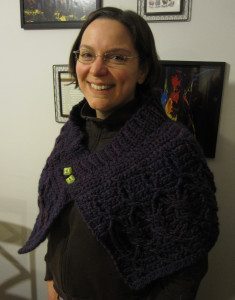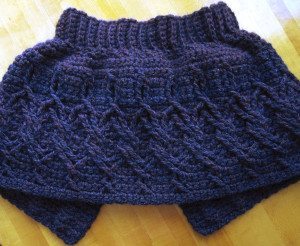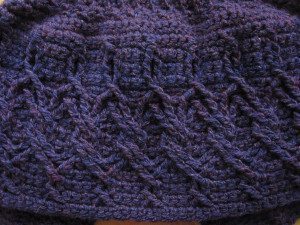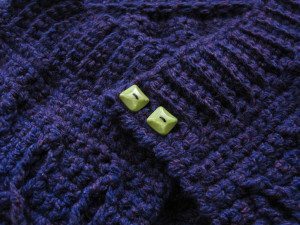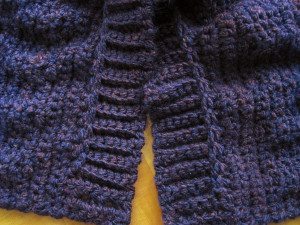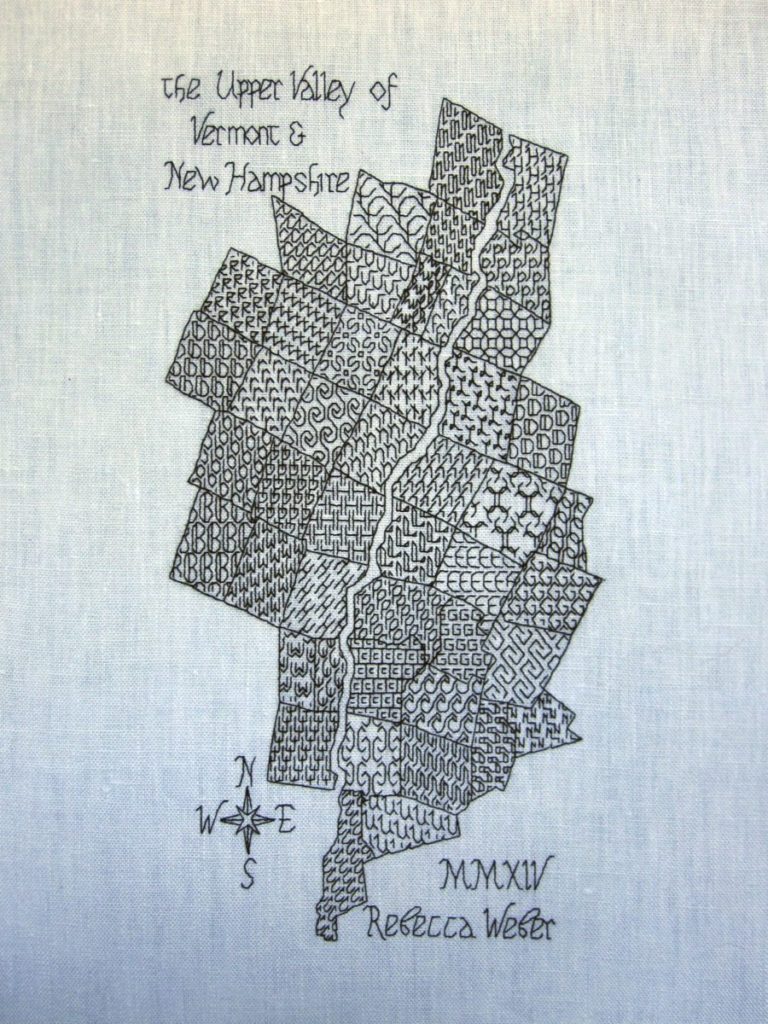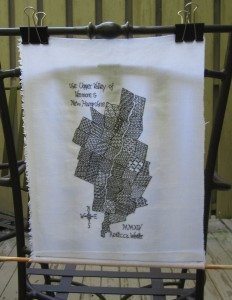I’ve developed a taste for shawls and scarves to just wear around in the winter, not necessarily with a coat. I’ve also realized I like them better than jewelry to add interest to a plain dress, on the rare occasions that I wear a dress. Somehow I learned about Make My Day Creative’s Multiplicity Buttoned Shawl, a free crochet pattern for a trapezoidal fan stitch shawl that buttons along the non-parallel edges. She called it Multiplicity because there are a lot of options for draping and buttoning it. I thought it would be a nice pattern to make a blingy version of, though that thought was probably helped by the fact that wool-free laceweight yarn is not common, and the kind I found that wouldn’t break the bank, by Premier, came in a self-striping sock version and a metallic-accented lace version. None of the sock colorways thrilled me, so Gypsy Bling it was. I found some buttons to match (though not until the shawl was stitched); they are much larger than the recommended 12mm. Button cameos by me and my avocado tree.
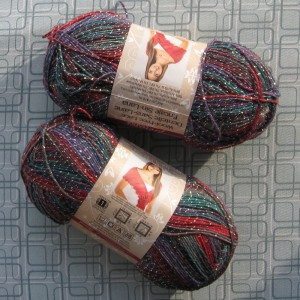
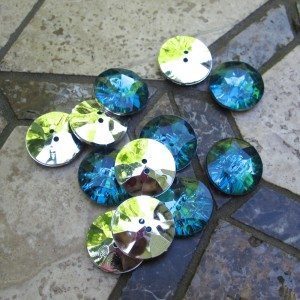
I’ve apparently never written here about my electric toothbrush sander, made from June Gilbank’s tutorial. I used it to take the little molding nub off the sides of the buttons, and it worked terrifically.
Anyway, I have postponed the final images long enough. The shawl itself:
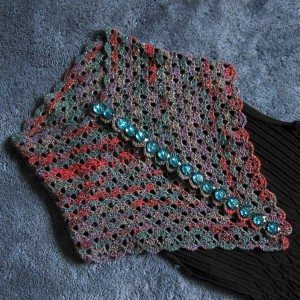
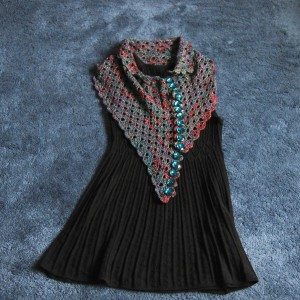
A few more notes: I ended up with one fewer starting shell and one fewer row-pair than the original pattern; the latter was actually great because it meant I needed 16 of my four-to-a-card buttons instead of 17. I do wish I had a bit more length – my shoulders are broader than average and my options for ways to wear this are somewhat restricted.
I had a hell of a time rewinding the yarn for use. It did not particularly want to unwind from the outside, but I couldn’t get it to pull from the inside. So I went back to the outside, but the first skein sort of exploded, and even with my loving husband’s help, getting it untangled took hours of work and split it into four pieces. I was smarter about the second skein and worked from the outside entirely, but even so it took an hour and a half to get it usable.
Finally, although synthetic fibers don’t really block, I did sort of block it. I machine washed it in a fine mesh bag, laid it out longways over my collapsible wooden drying rack, and clipped clothespins all around it. Every shell on the ends, and every four or five shells on the sides, with a second pin crosswise to the first for weight along the sides and a few extra pins clipped onto existing pins on the ends. It looked hilarious but worked pretty well. Should have gotten a photo!
